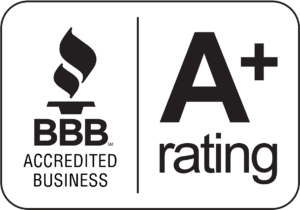Have you had to let an exciting investment opportunity pass you by because your Self-Directed IRA account at Preferred Trust Company is currently short on liquid, investable qualified funds? If making your annual contribution is not an option (i.e., you have maxed-out or don’t have the cash available) or not enough (i.e., Traditional/Roth 2021 contribution limit is $6,000), there is another method that might be at your disposal.
What is an IRA-to-IRA transfer?
If you are the owner of multiple, like-kind IRA accounts, you can engage in an IRA-to-IRA transfer of liquid qualified funds. This means that you can transfer qualified funds between two Traditional IRAs, two Roth IRAs, Two SIMPLE IRAs, and two SEP IRAs regardless of if the other IRA account is Self-Directed. This is a common practice used by IRA account owners to transfer qualified funds between their IRA accounts held at different institutions.
Assets transferred directly between like-kind IRAs do not have to be reported to the IRS and typically do not experience tax consequences.
How can this ability to transfer funds translate into a useful strategy?
There are no IRS imposed limits on the amount of qualified funds that can be transferred, as well as no limit on the number of times a direct custodial transfer can occur on an annual basis. This allows clients to be nimble with their investments and diversify their portfolios with the changing markets. For example, if an investor is anticipating a stock market correction and decides to liquidate their current IRA holdings; however, they still want to keep their cash working for them. They may decide to do this by transferring those liquid, qualified funds to their Self-Directed IRA to invest in alternative assets that have the potential for capital preservation, such as gold or real estate.
What are the steps to transfer liquid qualified funds?
To learn more about how to avoid delays in transferring your IRA funds and assets between different institutions, Click Here to read our Transfer Guide.
FAQ
Do I have to transfer the entire IRA account balance?
You do not have to transfer the entire account balance to implement this strategy. Partial transfers are a common practice to deploy liquid qualified funds in different markets to maintain a diversified portfolio. Custodial fees to process the partial transfer may apply.
What if I don’t have liquid qualified funds in my other IRA accounts?
Depending on the type of assets within your IRA account, you potentially have the option to liquidate those assets. Liquidating the assets would make the funds available to transfer to another IRA account and invest in different assets. This is based wholly upon your own discretion as the IRA account owner.
Will I receive tax documents for the IRA transfer?
IRA-to-IRA transfers are not required to be reported to the IRS, which means you will not receive an IRS Form 1099-R or Form 5498 tracking the movement of the assets.
Can I rollover funds from a 401k to an IRA?
This depends on your employment status and the employer’s 401k plan policies. If the account is from a previous employer, then you can typically rollover your funds into another tax-deferred IRA account (i.e., a Traditional SD-IRA at Preferred Trust Company) without experiencing any tax consequences. Due to various IRS regulations to protect 401k savings from fraudulent activities, the receiving custodian has very little involvement in the transfer process. This means that it is the sole responsibility of the 401k account owner to initiate, monitor, and complete the rollover process.
If the account is with a current employer, the employer’s 401k plan could completely restrict or limit the amount of funds that can be rolled out at any given time. It is the sole discretion and responsibility of the 401k account owner to confirm whether funds can be rolled out of the account.
To learn more about why you should not leave your retirement savings behind in a previous employer’s 401k account, Click Here.
Can I transfer assets from a pre-tax IRA account to an after-tax IRA account?
Engaging in this type of transfer would be considered a conversion and would be subject to potential tax consequences. It is often recommended that you refer to a tax professional to understand what the tax implications may be.


